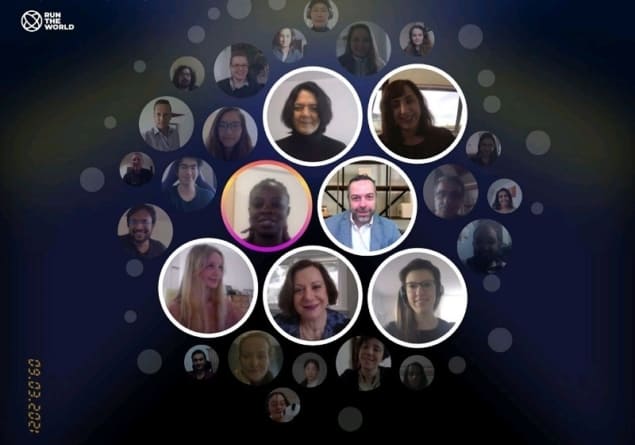
It’s questionable whether the romanticized archetype of the lone scientist has ever been the reality of science – even Isaac Newton didn’t work entirely in a vacuum, but often corresponded with Gottfried Leibniz. And certainly in the 21st century, working together is the name of the game.
I was reminded of this principle while attending the fourth Women in Quantum Summit, which took place on 9–11 March. It highlighted for me the importance not only of gender and background diversity in science, but also of collaboration in general.
Hosted by OneQuantum – an organization that brings together quantum-technology leaders from around the world – the summit included career-focused talks from quantum companies about their work as well as sessions on various aspects of the technology and where it is today.
Together, these events showcased the wide variety of opportunities in this exciting new field and allowed attendees to meet potential employers. While these summits do not exclude men, they differ from many such conferences in that most speakers are women, fostering an inclusive and inspiring environment for many who might often feel like outsiders in this field.
The event programme included “employers pitch” sessions, in which several quantum-technology companies, from start-ups like Pasqal to household names like Google, working on both hardware and software, introduced their work and the kinds of roles they have available. Most representatives were women working at the respective companies, and they were keen to emphasize their employers’ desire to hire more – not as some kind of box-ticking exercise, but because more diverse teams tend to perform better.
Unique to this most recent summit was a career fair following the employers pitch, where attendees could talk to representatives of companies in online booths, designed to recreate the networking opportunities presented by traditional in-person conferences. Though these online alternatives can seem a little strange at first, I think we’re all starting to get the hang of it now, and at a conference focused on quantum, of all fields, it felt aptly modern.
The second day of the summit was dedicated to the theme of quantum machine learning (QML) – an emerging field that aims to use quantum technology to advance machine learning. Three women scientists who work at Zapata Computing – a start-up founded in 2017 to develop quantum software for business – gave a fascinating talk about their work on QML. A poll at the beginning of this talk found that 83% of the audience, myself included, had no background in QML, so there was a lot to learn.
Hannah Sim, a quantum scientist, described her career path to date and how she had used her background in quantum physics to improve machine learning algorithms.
The second Zapata speaker, Kaitlin Gili, a quantum applications intern at Zapata, explained how quantum noise, typically thought to be a limitation in QML, can actually be harnessed as a useful feature when addressing certain tasks. For example, noisy quantum hardware can be applied to “generative models”, which are a promising candidate for AI. These models aim to find an unknown probability distribution, given many samples to train on, and produce an output of original data that is similar to the training set. The random noise that is input together with the training data turns out to be a useful part of the system.

Building a quantum-powered future
The third speaker, Marta Mauri, who is a quantum software engineer at Zapata, touched on the importance of curiosity-driven research, arguing in favour of exploratory studies and against the belief that all attempts to enhance machine learning with quantum should be justified.
I was left with the feeling that there are many questions yet to be answered in this area, and even more yet to be asked, with room for people from diverse backgrounds and different perspectives to contribute. Like many emerging scientific fields, QML is now so broad and deep that a single scientist – or even a handful of scientists – cannot hope to make progress in isolation.



